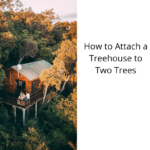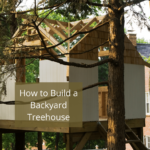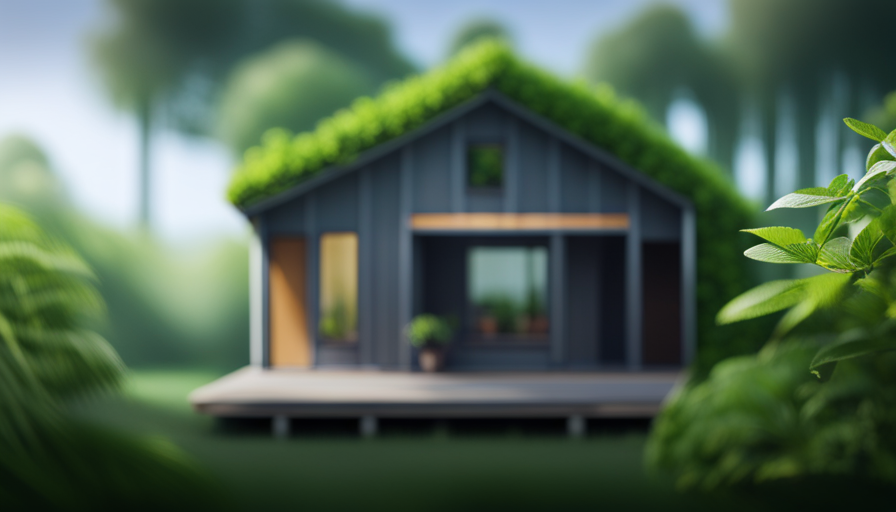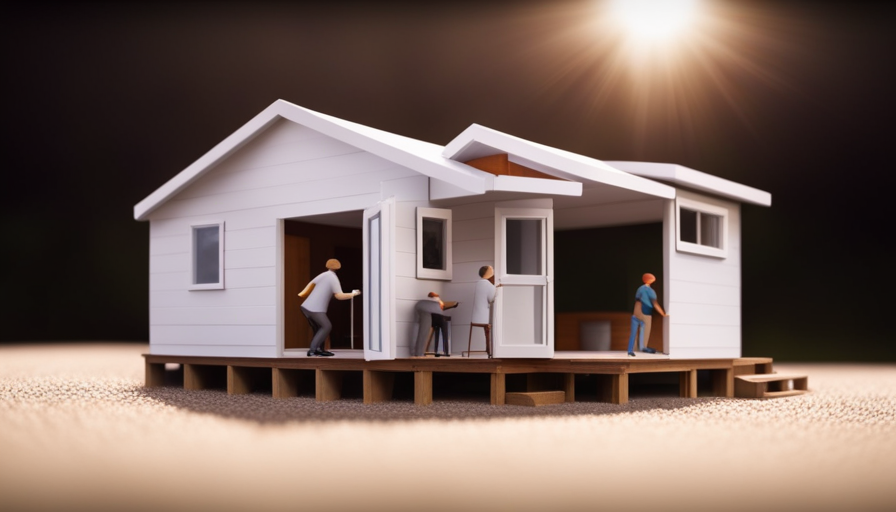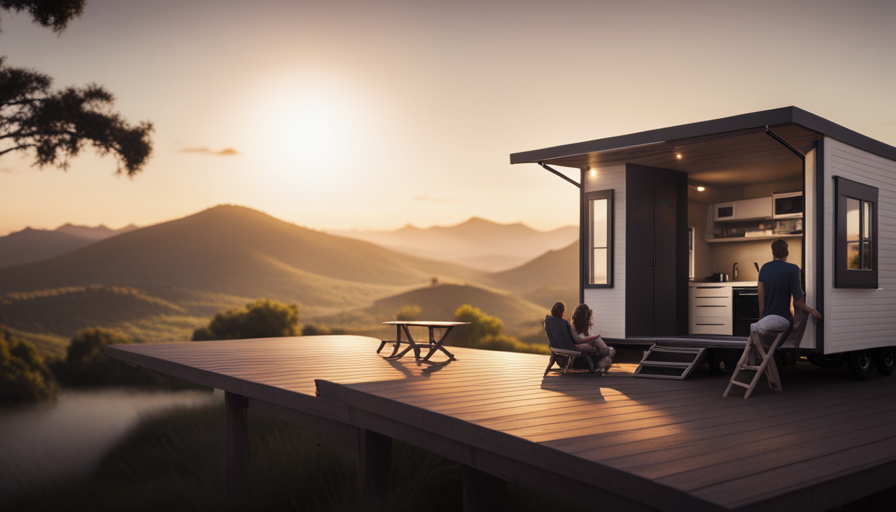Beginners Guides
Installing a Tree House Railing
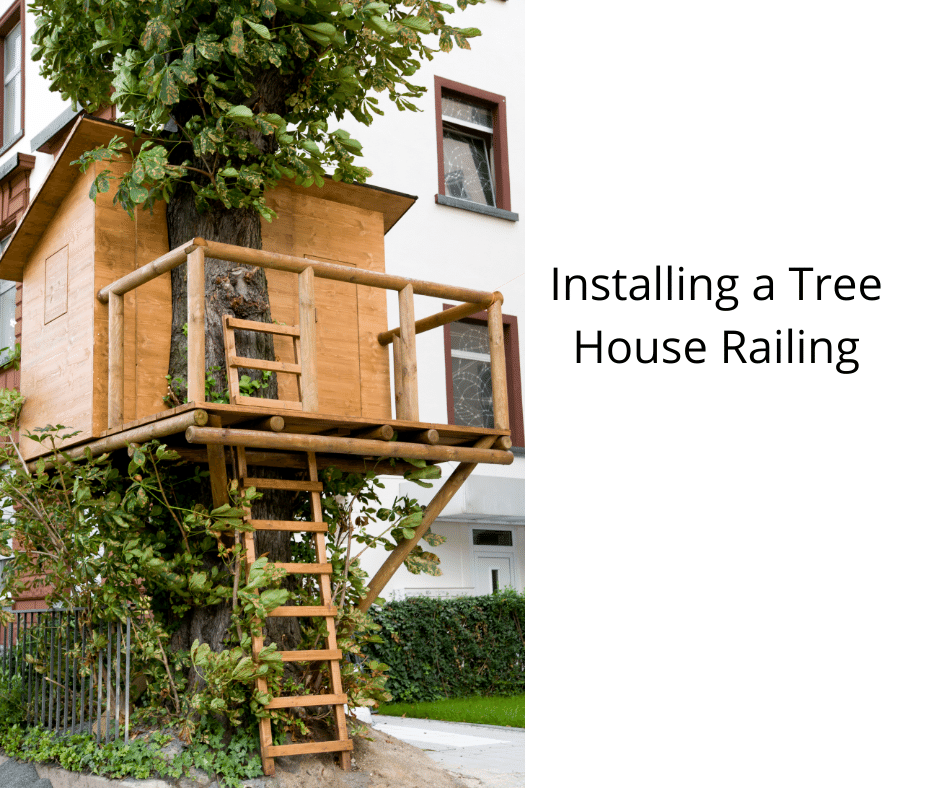
If you’re contemplating constructing a treehouse, incorporating a railing is a must. Though it might appear challenging, the process is relatively straightforward. There are multiple approaches to crafting a railing for your treehouse. Each technique has minor variations based on your specific requirements, but their fundamental objective remains the same. After making the decision to include a railing, it’s necessary to sketch out and organize its design. Following the completion of the design phase, the next step is to proceed with the installation.
Build a Tree House
Building a treehouse requires the construction of a treehouse railing. You should build your railing 36″ high and four inches apart. You can use wood mulch as padding between the balusters and the tree. When building your treehouse, choose a sturdy tree with branches that form a “V.” This will provide extra strength and stability to your railing. After you finish the treehouse, you can paint it and decorate it with various finishes.

To build a treehouse railing, you need first to prepare the platform. To do this, you’ll need two pressure-treated 2×10 wood beams. Cut the main beam to the desired height and attach it to the tree with 3/4-inch lag screws. Be sure to use screws that are long enough to penetrate the main beam and sink into the heartwood of the tree trunk. Then, pre-drill the posts using a corded drill. Use an extra-long auger bit that has a diameter smaller than the screw.
You can also install stairs or a ladder to provide safe access to the treehouse. To build the stairs, install a 4×4 post next to the base post. Then, use two 2×4 planks as steps. Nail each plank to the posts to secure it to the platform. Make sure that the steps are about 10 inches apart. The steps should be spaced so that the child can climb without hurting their ankles.
After you’ve prepared the platform, you can build the walls. You can also build the roof and deck, and then finish them with exterior trim and doors. The walls and railings should be waterproof, as well as lightweight. For the roof, you can use metal roofing instead of asphalt shingles. Also, you should use T1-11 siding to avoid multiple layers of siding. Moreover, you can use exterior caulk to finish the project.
Next, you can add fun additions to your treehouse. You can add slides or fireman’s poles, but make sure they don’t endanger the safety of others. For example, ensure the ladder and slides are secured with a gate built into the railing. Moreover, install a trap door in the floor if you are installing a fireman’s pole. These two additions can make the treehouse more fun for your child.
Using reclaimed wood is a great idea if you are an environmentalist. It is environmentally friendly to use reclaimed wood, but be sure to check it thoroughly for any signs of insect attack or decay. Also, make sure to check for cracks or splits that occur in the wood during the removal process. Otherwise, your tree house could fall down and you could lose everything. The last thing you want is for your child to fall from their tree house.
Design a Tree House Railing
A simple yet effective solution to creating a safer access point in a tree house is to design a railing system. This can be done by designing a railing system that matches the stairs. In this way, the two can be matched seamlessly, creating a beautifully designed space. In addition, it is easy to install a railing system. You can contact a professional for guidance if you don’t have experience in this area.
The first step in building a tree house is to create the platform. You should use pressure-treated lumber for the railing. You can also choose to use prefabricated walls. Either way, the railing should cover the entire area of the platform and include a handrail. Ideally, the railing system will be smooth and sturdy. Once the platform is constructed, you can then attach the handrail. Afterward, you can hang a ladder to reach the top level of the tree house.
A tree house railing system is crucial to the safety of your children. It must be sturdy enough to prevent your children from falling through it. When selecting a railing system, it is important to consider the child’s height and the height of the stairs and ladders. Remember that the railings should be high enough that children won’t be tempted to lean over. A pre-made deck railing system may save you both time and money.
Ensure that the posts are level and parallel to the joint of the boards. The corner posts are made of 4 to 6 inches diameter straight branches. The joint of the branches is made into a 7-inch-long notch. Once this is complete, the railing system is finished and ready for use. The rails are attached to the platform with 3-inch nails. The posts must be secured in place using framing nails.
When designing a treehouse, it is important to consider your child’s safety. The railing should be sturdy, and the walls should be sturdy. The walls should not have low windows or doors. If the platform has stairs, the railing should be designed around the door and landing spaces. If the platform is high enough to be dangerous, a safety harness is also essential. You should also consider a dust mask and a protective mask if you are sanding or painting wooden parts.
Choose the right bolts. The best bolts for tree houses are those that are 10 inches in diameter. Choose eight-inch bolts if the tree is equipped with two bolts. A 10″ bolt is suitable for trees with one bolt. Alternatively, an 8-inch bolt will be sufficient for trees with two bolts. In either case, the bolts should be securely fixed to the tree house to ensure safety.
Maintenance of A Tree House Railing
A railing is essential for any tree house as it provides a safe platform access. You can buy prefabricated railing systems or make your own using pressure treated lumber. Some tree house builders choose to build walls instead of railings. The railing you install should wrap around the platform to ensure safety. Make sure the railing is smooth and is wide enough to accommodate a handrail. For more information, contact a structural engineer or certified arborist.
Remember that a tree house should be at least eight feet off the ground. Ideally, it should be around seven feet high to avoid accidents, but there’s no need to go lower. Also, ensure that the tree is tall enough to support the platform, and that you don’t need to cut any branches to accommodate it. Also, make sure to wear gloves and wash your hands thoroughly after handling pressure-treated wood.
When choosing a tree house railing, remember that it shouldn’t have any holes greater than four inches. You should also choose a top rail at least 42 inches high. If you choose a tree house that’s less than six feet high, you’ll have to worry about falling out, so your railing should be as tall as possible. It’s also crucial to consider how you will attach your treehouse to the tree. Ensure that your chosen method is strong enough for the structure and won’t harm the trees.
The main beams of a treehouse need to be inspected and tightened regularly to prevent any damage. You should also check every bolt and nut to ensure they’re still tight and secure. Treehouses have a lot of moving parts and they can loosen fasteners over time. Moreover, you must consider the weather conditions in your area to ensure proper care. In case of a treehouse, you may have to move the main beams or reposition them as the tree grows.
Hi, I’m Emma. I’m the Editor in Chief of Tiny House 43, a blog all about tiny houses. While tree houses are often associated with childhood, they can be the perfect adult retreat. They offer a cozy space to relax and unwind, surrounded by nature. And since they’re typically built on stilts or raised platforms, they offer stunning views that traditional homes simply can’t match. If you’re looking for a unique and romantic getaway, a tree house tiny house might just be the perfect option.
Beginners Guides
How Are Tiny House Vintage Bus Family Doing Now

The proverb ‘Home is where the heart is’ perfectly encapsulates the spirit of one daring family. Driven by their commitment to minimalism and sustainable living, they took the courageous step of transforming an old bus into their comfortable, mobile dwelling.
Now, you may be wondering, how are they doing now? Well, let me tell you, their tiny house journey has been filled with both challenges and joys. From creating a functional and stylish living space to exploring the benefits of a mobile lifestyle, this family has truly thrived in their extraordinary abode.
So, if you’re curious about the lessons they’ve learned along the way and seeking advice for your own tiny house dreams, stay tuned. In this article, we’ll delve into the fascinating world of the tiny house vintage bus family and discover just how they’re doing now.
Key Takeaways
- The family has successfully converted a vintage bus into a functional and stylish home on wheels, embracing minimalism and sustainable living.
- They have adopted sustainable living tips such as solar power and composting, reducing their environmental footprint.
- The mobility of their tiny home allows them to travel and explore, promoting a sense of freedom and adventure.
- They have learned important lessons about the art of organization and creative storage solutions, maximizing the limited space available in their tiny home.
The Decision to Embrace Minimalism and Sustainable Living
Now, let’s see how the tiny house vintage bus family is doing after they made the life-changing decision to embrace minimalism and sustainable living!
Embracing minimalism has brought numerous benefits to their lives. By reducing their possessions to only what’s truly necessary, they’ve found a sense of freedom and clarity. Minimalism has allowed them to focus on experiences rather than material possessions, leading to a more fulfilling and intentional lifestyle.
In addition, they’ve adopted sustainable living tips, such as using solar power and composting, which have reduced their environmental footprint. These practices not only benefit the planet but also save them money in the long run.
With their newfound minimalistic and sustainable lifestyle, the family embarked on the next step of converting a vintage bus into a cozy home on wheels.
Converting a Vintage Bus into a Cozy Home on Wheels
When you convert a retro bus into a cozy home on wheels, you’ll be amazed to learn that over 60% of the interior space can be utilized for creative storage solutions.
Here are some key aspects of the converting process and the pros and cons of turning a vintage bus into a tiny house:
-
Layout: The layout of the bus can be customized to suit your needs, with options for separate living and sleeping areas, a kitchenette, and even a bathroom.
-
Storage: Utilizing every nook and cranny, you can incorporate built-in shelves, cabinets, and hidden compartments to maximize storage space.
-
Mobility: Being on wheels, a converted bus provides the freedom to travel and explore different places while still having the comforts of home.
-
Sustainability: Repurposing an old bus reduces waste and promotes sustainable living.
Converting a vintage bus into a cozy home on wheels has its challenges and joys, as we will explore in the next section about the challenges and joys of living in a tiny house.
Challenges and Joys of Living in a Tiny House
Get ready to embrace the exhilarating rollercoaster of emotions that come with the challenges and joys of living in a compact and mobile abode!
Living in a tiny house has its fair share of challenges, but it also brings immense joy and fulfillment. One of the main challenges is the limited space. It requires careful organization and creativity to make the most of every square inch. Additionally, adjusting to a minimalist lifestyle can be tough, especially if you’re used to having more possessions.
However, the joys of tiny house living are abundant. The freedom to travel and explore new places is unparalleled. Simple living brings a sense of peace and contentment, allowing you to focus on what truly matters.
Now, let’s transition into the subsequent section about creating a functional and stylish living space in our tiny home.
Creating a Functional and Stylish Living Space
Craft a living space in your compact abode that is both functional and stylish, allowing you to fully embrace the beauty of minimalist living. When it comes to tiny house living, maximizing every inch of space is essential. To achieve this, consider implementing functional storage solutions such as built-in cabinets and multipurpose furniture.
Utilize wall space by installing floating shelves or hanging organizers. Additionally, get creative with your interior design by incorporating clever space-saving techniques. Use foldable or collapsible furniture to optimize flexibility and create a sense of openness. Experiment with light colors and mirrors to make the space appear larger.
Lastly, don’t forget to personalize your tiny home with meaningful decor and accents that reflect your personality. By carefully designing your living space, you can create a functional and stylish home that fits your needs and preferences.
Transitioning into exploring the benefits of a mobile lifestyle, let’s now discuss the advantages of living on the move.
Exploring the Benefits of a Mobile Lifestyle
Embrace the freedom and adventure of a mobile lifestyle, where you can constantly explore new places and experience the thrill of living on the move.
One of the key benefits of this lifestyle is the minimalist approach it encourages, leading to improved mental health. By living in a tiny house, we’ve learned to prioritize what truly matters, letting go of unnecessary possessions and focusing on experiences rather than material goods.
Furthermore, the financial freedom that comes with a mobile lifestyle is undeniable. With reduced expenses and the ability to travel at our own pace, we’ve found a newfound sense of flexibility and control over our finances. This lifestyle has allowed us to save money, invest in experiences, and even pursue new opportunities along the way.
Transitioning into the subsequent section about ‘lessons learned and advice for others interested in tiny house living,’ we’ve discovered valuable insights that we’re eager to share.
Lessons Learned and Advice for Others Interested in Tiny House Living
After spending several years living in a vintage bus turned tiny house, my family and I have learned some valuable lessons along the way. One of the most important lessons we’ve learned is the importance of simplifying our lives and embracing minimalism. Living in a tiny space has forced us to prioritize what truly matters and let go of unnecessary possessions.
We’ve also learned the art of organization and creative storage solutions to maximize every square inch. Additionally, we’ve discovered numerous tips and tricks for efficient living, such as utilizing multi-purpose furniture and incorporating natural light to create an illusion of space. Through trial and error, we’ve found ways to make our tiny house feel cozy and functional.
As we move into the next section about thriving in our tiny yet extraordinary abode, we’re excited to share our experiences and insights.
Thriving in a Tiny Yet Extraordinary Abode
Living in a small space may present challenges, but with the right mindset and a dash of creativity, you can turn your compact living quarters into a remarkable haven.
As a family living in a tiny vintage bus, we’ve learned some valuable lessons on small space organization and maximizing storage. One of the most important aspects is to declutter regularly and only keep what you truly need.
We’ve found that utilizing vertical storage options, such as shelves and hooks, is a great way to maximize space. Additionally, investing in furniture with built-in storage compartments has been a game-changer for us. We also make use of under-bed storage and utilize every nook and cranny in our bus.
By implementing these strategies, we’ve been able to create a functional and organized living space that meets all of our needs.
Frequently Asked Questions
How much did it cost to convert the vintage bus into a tiny house?
Converting our vintage bus into a tiny house was an exciting project. The cost breakdown for the conversion totaled around $25,000. This included materials like insulation, flooring, plumbing, and electrical work.
We found some great deals on secondhand furniture and fixtures, which helped keep costs down. Tips for converting a vintage bus include careful planning, utilizing space-saving solutions, and seeking advice from experienced DIYers.
It’s a rewarding process that requires patience and creativity.
Where do the family park their tiny house on wheels?
Finding parking options for our tiny house on wheels can be challenging, but we’ve managed to find some great spots.
One of our favorite places is a cozy campground nestled in the mountains, where we wake up to breathtaking views every morning.
We also enjoy parking at RV parks, which provide amenities like electricity and water hookups.
Living in a small space has its challenges, but the freedom to travel and the simplicity of our lifestyle make it all worth it.
How do the children adjust to living in such a small space?
The children adjust to living in a small space by developing a strong bond with each other. They engage in creative play and spend quality time together. However, their social life may be limited compared to children living in larger homes.
Homeschooling can present challenges, as finding a quiet space for studying can be difficult. Nonetheless, with proper organization and time management, these challenges can be overcome, allowing the children to thrive in their unique living situation.
What are some of the biggest challenges the family faces while living in a tiny house?
Living in a tiny house has its share of challenges. Space limitations can be a constant battle as we try to find creative ways to store our belongings. It’s like a puzzle, fitting everything in just right. Sometimes it feels like we’re playing a game of Tetris, trying to make everything fit.
But despite the challenges, we’ve learned to appreciate the simplicity and minimalism that comes with living in a tiny house. It forces us to prioritize what truly matters and live a more intentional life.
How has living in a tiny house affected the family’s relationships and overall well-being?
Living in a tiny house has significantly impacted our family dynamics and overall well-being. The close quarters have forced us to communicate and work together more efficiently, strengthening our relationships.
However, it has also brought about certain challenges, such as privacy concerns and limited personal space. Emotionally, it’s been a rollercoaster as we navigate the ups and downs of living in a small space.
Despite the challenges, we’ve learned to adapt and find joy in the simplicity of our lifestyle.
Conclusion
In conclusion, living in a tiny house on our vintage bus has been a transformative experience. We’ve embraced minimalism and sustainable living, finding joy in simplicity and reducing our environmental footprint.
Converting the bus into a cozy home was a labor of love, and despite the challenges, we’ve created a functional and stylish living space.
Our mobile lifestyle has allowed us to explore new places and meet incredible people. Like a butterfly emerging from its cocoon, we’ve thrived in our extraordinary abode, proving that sometimes the smallest spaces can hold the biggest adventures.
Hi, I’m Emma. I’m the Editor in Chief of Tiny House 43, a blog all about tiny houses. While tree houses are often associated with childhood, they can be the perfect adult retreat. They offer a cozy space to relax and unwind, surrounded by nature. And since they’re typically built on stilts or raised platforms, they offer stunning views that traditional homes simply can’t match. If you’re looking for a unique and romantic getaway, a tree house tiny house might just be the perfect option.
Beginners Guides
How Big Can A Tiny House Be Tax Exempt
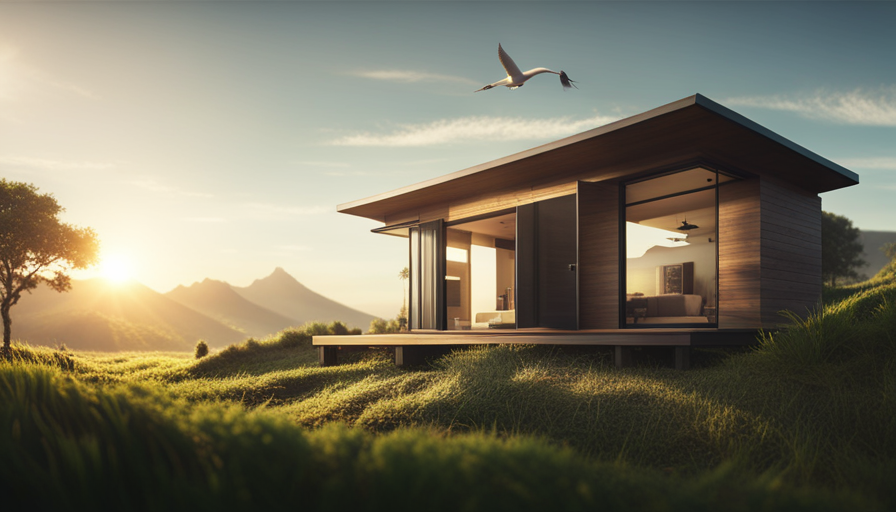
In the realm of real estate, the quest for a perfect dwelling can often resemble the challenge of locating a needle in a haystack. Yet, picture this: what if the needle could be turned into a tiny house, a snug and budget-friendly home that provides an unparalleled feeling of liberty and adaptability?
Just like the needle, these tiny houses may seem small at first glance, but their potential for tax exemption can be much bigger than meets the eye.
Welcome to the world of tax-exempt tiny houses, where size doesn’t necessarily dictate their eligibility for tax benefits. Much like an enchanting puzzle, the rules and regulations surrounding tax exemption for tiny houses can be complex, requiring careful consideration and planning.
In this article, we will delve into the intricacies of tax exemption for these pint-sized dwellings, exploring factors such as square footage limitations, design considerations, and the permitting process. By examining real-life case studies and exploring alternative options for those that don’t meet tax exemption requirements, we hope to provide a comprehensive guide for anyone embarking on their tiny house journey.
So, let’s unravel the mysteries and discover just how big a tiny house can be to enjoy tax exemption.
Key Takeaways
- Tax exemption for tiny houses is possible regardless of size.
- Maximum square footage for tax exemption varies by local government.
- Meeting local government permitting requirements is crucial for tax exemption eligibility.
- Consult with a tax professional to understand the tax implications of a tiny house.
Understanding Tax Exemption for Tiny Houses
So you’re probably wondering, how big can your tiny house be to qualify for tax exemption? Well, the answer depends on the tax exemption eligibility criteria and regulations set by your local government. Each jurisdiction may have different rules regarding the size of a tiny house that can be considered for tax exemption.
Some places may define a maximum square footage, while others may base it on the number of rooms or occupants. To determine the maximum square footage for tax exemption, you will need to consult your local tax office or government website for specific guidelines. Understanding these regulations is crucial to ensure that your tiny house meets the requirements for tax exemption.
Now let’s move on to determining the maximum square footage for tax exemption.
Determining the Maximum Square Footage for Tax Exemption
Determining the maximum square footage for tax exemption can be as mind-boggling as trying to count the stars in the sky. The rules and regulations surrounding tax exemption for tiny houses vary from state to state, and even within different municipalities. It’s a complex web to navigate, but understanding the maximum square footage allowed for tax exemption is crucial.
To help you grasp the gravity of this topic, consider the following nested bullet point list:
- On one hand, some states have a strict maximum square footage limit of 400 square feet for tax exemption. This can be frustrating for those who desire a slightly larger tiny house.
- On the other hand, there are states that have more lenient policies, allowing up to 1,000 square feet for tax exemption. This offers more flexibility for individuals who want a slightly larger living space.
With these varying regulations in mind, it’s important to consider factors such as location, building codes, and personal preferences when designing a tax-exempt tiny house. This ensures compliance with regulations and maximizes the benefits of tax exemption.
Factors to Consider When Designing a Tax-Exempt Tiny House
When planning your small abode, it’s essential to take into account various factors that can impact your eligibility for tax exemption.
One of the most important considerations is meeting the permitting requirements set by your local government. Each jurisdiction has different regulations regarding the size, location, and construction of tiny houses, so it’s crucial to research and comply with these guidelines.
Additionally, understanding the tax implications of your tiny house is vital. Some states may offer tax incentives or exemptions for certain types of dwellings, while others may not. It’s advisable to consult with a tax professional to ensure you’re aware of any potential tax benefits or liabilities associated with your tiny house.
By carefully considering these factors, you can navigate the permitting process and maximize your chances of achieving tax exemption for your tiny house.
Transitioning into the next section, let’s explore how to navigate the permitting process for tax-exempt tiny houses.
Navigating the Permitting Process for Tax-Exempt Tiny Houses
Navigating the permitting process for tax-free small dwellings can be a complex journey, but with the right knowledge and guidance, you can successfully pave the way towards achieving your dream abode. When it comes to building a tax-exempt tiny house, it’s important to understand the permitting process and the building codes that apply. Municipalities have different regulations, so it’s crucial to research and comply with the specific requirements of your area. To help you navigate this process, I have created a table outlining some common considerations:
| Consideration | Description |
|---|---|
| Zoning regulations | Determine if tiny houses are allowed in your area and under what conditions. |
| Building codes | Ensure your tiny house meets all safety and construction standards. |
| Permit requirements | Determine the necessary permits and inspections for your project. |
By understanding and adhering to these factors, you can ensure a smoother permitting process for your tax-exempt tiny house. Now, let’s address some common misconceptions about tax-exempt tiny house size.
Common Misconceptions about Tax Exempt Tiny House Size
Don’t let misconceptions about the size of your dream home hold you back – it’s like thinking you can’t have a fulfilling life because you’re not a skyscraper, when in reality, a cozy cottage can offer just as much joy and comfort.
When it comes to tax-exempt tiny houses, there are common misconceptions about the size limitations. However, the truth is that the size of a tiny house eligible for tax exemption can vary depending on local zoning regulations. Some areas may have specific square footage requirements, while others may focus on other factors such as the overall footprint or the number of rooms.
Understanding the specific zoning regulations in your area is crucial to determine the maximum size of your tax-exempt tiny house. By taking advantage of tax exemption benefits, you can save money and enjoy the freedom of living in a smaller, more sustainable home.
Now, let’s explore some case studies: examples of tax-exempt tiny houses.
Case Studies: Examples of Tax-Exempt Tiny Houses
Imagine the joy and freedom of living in a small, sustainable home while saving money through tax exemption benefits – let’s explore some inspiring case studies of individuals who have achieved just that with their cozy, dream dwellings.
These case studies provide real-life examples of how individuals have successfully navigated the tax exempt criteria for tiny houses.
One such case study is Sarah, who built a 200 square foot tiny house on a foundation and qualified for tax exemption by meeting the size and sustainability requirements set by her local government.
Another case study is John, who opted for a 250 square foot tiny house on wheels and was able to obtain tax exemption by meeting the criteria for mobility and sustainability.
These examples demonstrate that with careful planning and adherence to the tax exempt criteria, individuals can enjoy the benefits of tax exemption while living in their ideal tiny homes.
Now, let’s explore alternative options for tiny houses that don’t meet tax exemption requirements.
Alternative Options for Tiny Houses that Don’t Meet Tax Exemption Requirements
Explore other avenues for your compact abode that may not qualify for tax exemption, but are as refreshing as a cool breeze on a hot summer day. If your tiny house doesn’t meet the requirements for tax exemption, don’t worry, there are still alternative options available to you.
One option is to explore alternative financing methods such as personal loans or crowdfunding platforms specifically designed for tiny house projects. These options can provide the necessary funds to build your tiny house without relying on tax exemptions.
Additionally, it’s important to consider zoning regulations when looking for alternative options. Some areas may have zoning restrictions that make it difficult to legally place a tiny house. However, there are communities and developments that cater to tiny house living and have specific zoning regulations in place to accommodate these unique dwellings.
By exploring alternative financing and understanding zoning regulations, you can still find a way to make your tiny house dream a reality.
Frequently Asked Questions
Can I claim tax exemption for my tiny house if it is used as a primary residence?
Yes, you can claim tax benefits for your tiny house if it’s used as your primary residence. The IRS allows homeowners to deduct mortgage interest and property taxes on their primary residence, regardless of its size. However, it’s important to note that there’s no specific size limit for tiny houses to be tax exempt. As long as your tiny house meets the requirements of a primary residence, you can enjoy the tax benefits associated with it.
Are there any specific requirements for the location of a tax-exempt tiny house?
There are specific requirements for the location of a tax-exempt tiny house, including zoning regulations. Zoning regulations vary by jurisdiction and determine where different types of structures, including tiny houses, can be located.
It’s important to research and comply with local zoning laws to ensure that your tiny house is in a suitable location for tax exemption. Factors such as minimum lot size, setbacks, and allowed land uses may all impact the eligibility of a tiny house for tax exemption.
Is there a limit on the number of rooms or sleeping areas allowed in a tax-exempt tiny house?
There isn’t a specific limit on the number of bedrooms or sleeping areas allowed in a tax-exempt tiny house. However, it’s important to note that the living space should still adhere to the guidelines for a tiny house to qualify for tax exemption.
While the number of bedrooms can vary, it’s crucial to maintain the overall compactness and efficiency of the tiny house. This ensures that it remains within the acceptable size limits.
Can I still qualify for tax exemption if my tiny house is on wheels and considered a recreational vehicle?
Yes, you may still qualify for tax exemption even if your tiny house is on wheels and considered a recreational vehicle. However, it’s important to note that tax exemption eligibility varies depending on your jurisdiction. To ensure you meet the criteria, consult with a tax professional or local authorities.
Additionally, when considering a tiny house on wheels, it’s crucial to explore insurance options specifically designed for tiny homes and research financing options that cater to this unique type of housing.
Are there any additional tax benefits or incentives for incorporating sustainable features into a tax-exempt tiny house?
Incorporating sustainable features into a tax-exempt tiny house can provide additional tax benefits and incentives. For example, installing solar panels can qualify you for the federal solar investment tax credit, which allows you to deduct a percentage of the installation cost from your taxes. This not only helps the environment but also saves you money in the long run.
Additionally, using energy-efficient appliances and materials can potentially qualify you for other tax deductions or credits.
Conclusion
After delving into the intricacies of tax exemption for tiny houses, it becomes clear that size does matter. While there are limitations to the square footage, the possibilities are still vast.
Designing a tax-exempt tiny house is a delicate balance of creativity and adherence to regulations. Navigating the permitting process may seem daunting, but with persistence, it can be conquered. So don’t be discouraged if your dream tiny house doesn’t meet the exemption requirements, as there are alternative options to explore.
Remember, even in the smallest of spaces, big dreams can thrive.
Hi, I’m Emma. I’m the Editor in Chief of Tiny House 43, a blog all about tiny houses. While tree houses are often associated with childhood, they can be the perfect adult retreat. They offer a cozy space to relax and unwind, surrounded by nature. And since they’re typically built on stilts or raised platforms, they offer stunning views that traditional homes simply can’t match. If you’re looking for a unique and romantic getaway, a tree house tiny house might just be the perfect option.
Beginners Guides
How Big Can A Tiny House Be In Nevada

Within the expansive desert terrain of Nevada, amidst wide stretches and boundless opportunities that extend to the horizon, a hidden gem can be found: the tiny house. This emblem of liberty, simplicity, and eco-friendliness has enchanted numerous individuals looking for a different lifestyle, capturing their hearts and sparking their imaginations.
But in this land of boundless potential, how big can a tiny house truly be?
Nevada’s regulations and zoning laws for tiny houses may seem like a labyrinth of restrictions and guidelines, but fear not, for I shall be your guide through this intricate maze. Together, we will navigate the intricate web of rules, determine the maximum square footage allowed, explore innovative design solutions, and discover suitable locations and communities for tiny house living.
So, join me on this remarkable journey as we delve into the depths of Nevada’s tiny house landscape, uncovering the practical considerations, permitting processes, and the myriad of benefits that come with living big in a tiny house. It’s time to unlock the door to a world where size truly doesn’t matter.
Key Takeaways
- The minimum square footage for a tiny house on a foundation in Nevada is typically around 200 square feet.
- The maximum square footage allowed for a tiny house on wheels in Nevada is typically around 400 square feet, but it can vary depending on local regulations.
- Some regions in Nevada have adopted the International Residential Code (IRC) Appendix Q, which provides guidelines for tiny houses on a foundation.
- Zoning restrictions and local regulations should be considered when building or living in a tiny house in Nevada.
Understanding Nevada’s Regulations and Zoning Laws for Tiny Houses
If you’re considering building a tiny house in Nevada, it’s important to understand the state’s regulations and zoning laws.
When it comes to determining the minimum square footage for a tiny house, there are specific guidelines to follow. In Nevada, the minimum square footage requirement for a tiny house on a foundation is typically around 200 square feet. However, it’s crucial to check with the local zoning department as requirements may vary depending on the specific county or municipality.
Understanding zoning restrictions is also essential when planning to build a tiny house in Nevada. Some areas may have restrictions on where tiny houses can be located, such as limiting them to certain zones or requiring them to be part of an existing dwelling. These regulations are in place to ensure safety and maintain the character of the community.
Now, let’s move on to determining the maximum square footage allowed for a tiny house in Nevada.
Determining the Maximum Square Footage Allowed for a Tiny House in Nevada
You can find out the maximum square footage allowed for a cozy home on wheels in the beautiful state of Nevada. Here are three key points to consider regarding the maximum square footage and zoning laws for tiny houses in Nevada:
-
Zoning laws vary across different regions in Nevada, so it’s important to research and understand the specific regulations in the area where you plan to place your tiny house.
-
In some areas, the maximum square footage allowed for a tiny house on wheels is typically around 400 square feet. However, this may vary depending on the local zoning laws and regulations.
-
Some regions in Nevada have adopted the International Residential Code (IRC) Appendix Q, which provides specific guidelines for tiny houses on a foundation. These guidelines often include a maximum square footage limit that ranges from 400 to 800 square feet.
By understanding the maximum square footage allowed and the specific zoning laws in Nevada, you can ensure that your tiny house complies with regulations.
Transitioning into the subsequent section, let’s now explore creative design solutions to maximize space in a tiny house.
Exploring Creative Design Solutions to Maximize Space in a Tiny House
To make the most of limited space in a small dwelling, consider incorporating multi-purpose furniture, such as a sofa that can transform into a bed, like the one used by Jane in her 300-square-foot urban apartment in Reno. Maximizing functionality is crucial when designing a tiny house, and utilizing furniture that serves dual purposes is an effective way to achieve this.
In addition to multi-purpose furniture, optimizing storage is essential in a tiny house. Utilize vertical space by installing shelves or cabinets that reach up to the ceiling. Consider utilizing under-bed storage or incorporating built-in storage solutions. Every inch counts in a tiny house, so it’s important to carefully plan and utilize the available space efficiently.
By maximizing functionality and optimizing storage, you can create a comfortable and efficient living environment in a tiny house. Transitioning into considering practical considerations for living in a tiny house in Nevada, it is important to also consider factors such as energy efficiency and zoning regulations.
Considering Practical Considerations for Living in a Tiny House in Nevada
When considering the practical aspects of living in a small dwelling in the Silver State, it’s important to take into account energy efficiency and local zoning regulations.
In Nevada, where temperatures can soar in the summer and drop in the winter, energy efficiency becomes crucial to ensure comfortable living conditions year-round. To achieve this, consider using insulation with high R-values, energy-efficient appliances, and renewable energy sources such as solar panels.
Additionally, familiarize yourself with the local zoning regulations to ensure your tiny house meets the required standards and can be legally parked or placed on a specific piece of land. Some alternative housing options in Nevada include tiny house communities, RV parks, and private land rentals. These options provide a sense of community and amenities that enhance the tiny house living experience.
Transitioning to finding suitable locations and communities for tiny house living in Nevada, it is essential to explore different areas that align with your lifestyle and preferences.
Finding Suitable Locations and Communities for Tiny House Living in Nevada
Explore the unique communities and scenic landscapes of the Silver State, where your dream of living in a small, sustainable dwelling can become a reality. Nevada offers a variety of tiny house communities that cater to individuals seeking a minimalist lifestyle. These communities provide an opportunity to connect with like-minded individuals and enjoy shared amenities such as communal gardens and gathering spaces.
Additionally, for those seeking a more secluded experience, there are numerous off-grid locations available throughout the state. These remote areas allow tiny house enthusiasts to embrace a self-sufficient lifestyle, relying on renewable energy sources and practicing sustainable living.
Discovering the perfect location for your tiny house in Nevada is just the first step towards fulfilling your dream. Next, we will explore the process of navigating the permitting process for building a tiny house in Nevada.
Navigating the Permitting Process for Building a Tiny House in Nevada
Embarking on the journey of building your dream sustainable dwelling in Nevada involves navigating a complex permitting process. You’ll need to traverse through the intricate maze of regulations and guidelines. Here are four key permitting challenges you may encounter when building a tiny house in Nevada:
-
Zoning restrictions: Ensure that the location you choose allows for tiny houses and complies with the local zoning regulations. Some areas may have specific requirements for minimum lot size or setbacks.
-
Building code requirements: Familiarize yourself with the building codes applicable to tiny houses in Nevada. These codes may include regulations on minimum room sizes, ceiling heights, and safety features such as smoke detectors and fire escapes.
-
Utility connections: Determine how you will connect your tiny house to utilities such as water, electricity, and sewage. Some areas may require specific permits or inspections for these connections.
-
Permitting timeline: Be prepared for potential delays in the permitting process. It’s important to understand the timeline and requirements for each permit you need to obtain.
Navigating the permitting process can be challenging, but it’s a necessary step towards realizing your dream of living big in a tiny house in Nevada.
Transitioning to the subsequent section about embracing the benefits of this lifestyle, let’s explore the possibilities of maximizing space and minimizing environmental impact.
Embracing the Benefits of Living Big in a Tiny House in Nevada
Now that we’ve discussed the ins and outs of navigating the permitting process for building a tiny house in Nevada, let’s shift our focus to embracing the benefits of living big in a tiny house in this state.
Living large doesn’t always mean having a big house; it’s about making the most of the space you have. Downsizing has numerous benefits, both practical and financial. By embracing a minimalist lifestyle, you can reduce your carbon footprint, minimize your expenses, and simplify your daily routine.
With careful planning and smart design choices, you can maximize the functionality and efficiency of your tiny house, creating a comfortable and spacious living environment.
Nevada offers a unique opportunity to experience the joys of living large in a tiny house, so let’s dive into the details and explore the endless possibilities that await those who choose to downsize.
Frequently Asked Questions
What are the specific regulations and zoning laws for tiny houses in Nevada?
Specific regulations and zoning laws for tiny houses in Nevada are governed by local jurisdictions, so it’s important to research the specific area you plan to build in.
Building codes will dictate the size, materials, and safety requirements for your tiny house.
Zoning laws determine where you can place your tiny house, whether it’s in a tiny house community or on your own land.
Financing options, land availability, off-grid living, environmental impact, building permits, and insurance requirements are all factors to consider when embarking on your tiny house journey in Nevada.
How is the maximum square footage allowed for a tiny house determined in Nevada?
Determining the maximum square footage allowed for a tiny house in Nevada is guided by Nevada regulations and zoning laws. Design solutions that focus on space maximization can help meet the requirements. Practical considerations, such as the number of occupants and necessary amenities, also play a role.
Living in a tiny house requires suitable locations, which may include designated tiny house communities. Compliance with local regulations is essential to ensure adherence to the maximum square footage allowed.
What are some creative design solutions to maximize space in a tiny house?
When it comes to maximizing space in a tiny house, innovative storage solutions and multi-functional furniture are key.
One creative design solution is to utilize vertical space by installing floor-to-ceiling shelving or utilizing wall-mounted storage units.
Additionally, incorporating furniture with built-in storage compartments or convertible features can help maximize space.
By thinking outside the box and utilizing these design strategies, you can make the most of every square inch in your tiny house.
What practical considerations should be taken into account when living in a tiny house in Nevada?
Practical considerations should be taken into account when living in a tiny house in Nevada. Some benefits include reduced expenses, minimal maintenance, and a smaller carbon footprint. However, challenges such as limited storage space, potential zoning restrictions, and extreme weather conditions should be addressed.
It’s crucial to plan for efficient use of space, install proper insulation, and design a functional layout. Additionally, water and power sources, as well as waste management, should be carefully considered.
How can one find suitable locations and communities for tiny house living in Nevada?
When it comes to finding suitable locations and communities for tiny house living in Nevada, there are a few factors to consider.
One option is to join online forums and social media groups dedicated to tiny house enthusiasts, where you can connect with like-minded individuals and get recommendations.
Additionally, there are websites specifically designed to help you locate tiny house communities in Nevada.
As for financing options, some lenders offer specialized loans for tiny homes, while others may consider it as a personal loan.
Conclusion
In conclusion, living big in a tiny house in Nevada isn’t just possible, but it also offers a unique and fulfilling lifestyle. By understanding the state’s regulations and zoning laws, determining the maximum square footage allowed, exploring creative design solutions, and considering practical considerations, one can successfully build and enjoy a tiny house in Nevada.
Additionally, finding suitable locations and communities and navigating the permitting process are crucial steps in the process. It’s important to remember that "good things come in small packages," and embracing the benefits of tiny house living can bring joy, simplicity, and a sense of freedom to one’s life.
Hi, I’m Emma. I’m the Editor in Chief of Tiny House 43, a blog all about tiny houses. While tree houses are often associated with childhood, they can be the perfect adult retreat. They offer a cozy space to relax and unwind, surrounded by nature. And since they’re typically built on stilts or raised platforms, they offer stunning views that traditional homes simply can’t match. If you’re looking for a unique and romantic getaway, a tree house tiny house might just be the perfect option.
-

 Beginners Guides2 months ago
Beginners Guides2 months agoHow To Buy A Tesla Tiny House
-

 Energy Efficiency2 weeks ago
Energy Efficiency2 weeks agoBest Tiny Homes For Cold Climates
-

 Beginners Guides2 months ago
Beginners Guides2 months agoTiny House Nation Where Are They Now Stephanie
-

 Tiny House Resources (e.g., legalities, cost, insurance, FAQs)4 weeks ago
Tiny House Resources (e.g., legalities, cost, insurance, FAQs)4 weeks agoDo Tiny Homes Need Planning Permission?
-

 Beginners Guides2 months ago
Beginners Guides2 months agoFrom The Show Tiny House Nation How Many Keep Their Tiny House?
-

 Beginners Guides4 weeks ago
Beginners Guides4 weeks agoUsing a Climbing Net For Treehouse Construction
-

 Beginners Guides4 weeks ago
Beginners Guides4 weeks agoHow to Build a Treehouse Without Drilling Into the Tree
-

 Beginners Guides2 months ago
Beginners Guides2 months agoTiny House Nation Who Pays For The Houses



